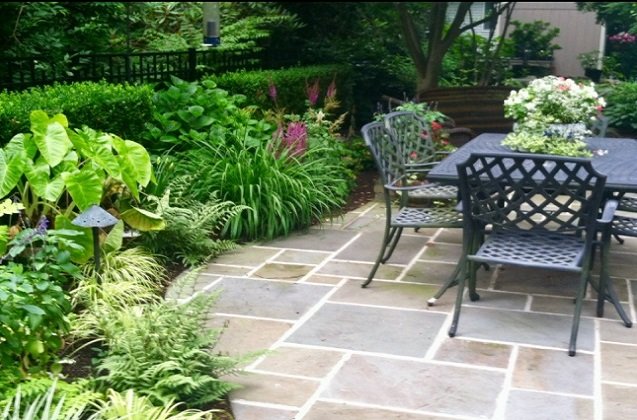Having a garden at home, growing our own vegetables and bringing to the table the fruits of the plants that we have cared for with care and perseverance for months is a unique and incomparable experience. A small luxury that, basically due to lack of space, not everyone can afford … or can they?
Today we propose you to undertake a project that you can share with the whole family, which will give you great satisfaction and will bring joy and color to your balcony or to the space you want to allocate: setting up your own urban garden from scratch.
Follow the steps that we offer below at your own pace, without haste and enjoying the whole process to the fullest. When finished, you will have a small oasis of life carved with your own hands, a delight for all the senses, even for taste.

You’ll see when you taste the tomatoes, zucchini or aubergines that come out of it! But let’s not dwell on it further. So, let’s get started!
Your garden at home: first steps
The first thing we must do before starting to set up our garden at home is to decide what space we will assign it. This is extremely important, as it will largely determine the success or failure of our project. For this you must take into account some considerations:
It should be a sunny place, with natural light for as many hours a day as possible (it does not have to be direct light, but it does have enough to feed the plants that grow in it).
You have to have a nearby water intake. Although this is not entirely essential, it will save you time and effort when watering.
It is important that the soil has a good drainage system and that it channels the excess water towards a drain or water outlet. If you install your garden in a gallery or an interior space (be careful, remember: it must have enough natural light), you can compensate for the absence of drains by installing trays that collect the excess irrigation water.
Keep in mind that the space that the garden will occupy will get dirty easily (transplants, pruning, watering …). Take the measures that you think are appropriate so that this does not represent an added problem (you can delimit the adjoining space with pots or other decorative elements and thus you will save many headaches in the future).
Once you have decided where you are going to locate your garden, you can get to work. Take a breath, gather the people at home and get ready to begin this small adventure, as healthy and educational as it is sustainable and ecological.
How to set up your urban garden at home
First, you must choose the material that best suits you to build the support or the pots. Choose the one that suits you the most or the one that you have the most at hand.
We strongly recommend that you do not buy anything that is not strictly essential: life grows even in the most unthinkable corners if it finds the necessary conditions to do so. You can give new uses to almost any object that you have around the house without using or half abandoned.
Depending on the space you have, you can set up two types of garden:
Horizontal: with pots placed side by side, as if they were ornamental plants or flowers.
Vertical: on different floors. This type of garden, in addition to saving space, will allow you to work more comfortably.
Build a home garden with recycled materials
To make it even easier for you, we propose some ideas for you to set up your garden on supports made of recycled materials:
Old, broken or disused drawers and cabinets can also serve as a platform to build a vertical urban garden. If they are made of wood, remember to line the drawers with plastic bags before introducing the soil, and try to keep distance between them so that the light penetrates or you can also learn how to make a grow box if you have less space.
You can build pots with empty plastic bottles and jugs.
You can use small wooden boxes, the kind used to transport fruit and that are usually thrown away after a single use. In your usual greengrocer they can give you the ones you need totally free. These boxes are perfect for setting up a garden at home: you can move them comfortably, place them one on top of the other or arrange them as it suits you by assembling modules and separating the different species of plants.
If you have enough space, you can use wooden pallets, the kind that are used for transport and that are thrown away when they are broken or bruised. The pallets offer the ideal measures for all kinds of plants to grow inside.
If you have any Ikea lantern at home that you want to give it a new use, they serve as perfect supports for planting.
Once this is done, you will only have to fill the pots, drawers or boxes you have chosen with soil and plant your seeds, cuttings or sprouts at will. And remember that in our guide, completely free, How to make an urban garden you will find a lot of information about this and other related issues that may be of interest to you when setting up your garden at home.
Final steps: choosing the soil and seeds
The land that best suits an urban garden is the one you find in any cultivated field. If it has a high content of sand or clay, it is best to mix it with plant substrate, which is typical that we find in any florist or specialized DIY store.
Allow us a little note on the subject before continuing: the compost obtained by recycling organic matter is perfect for this (and completely free, if you do it at home). It provides the necessary nutrients for plants to grow healthy and vigorous, and also gives you the option of recycling the organic waste generated in your home. You can install a small extra drawer for vermicomposting.
On the page of the NGO Friends of the Earth, for example, they give you extensive information on the subject, with interesting links so that you can set up your own composting system at home.
We have already exposed some recommendations in this regard in other posts, such as the one in which we talk about an ecological urban garden. Let’s review others that may also be useful in this regard:
Choose seasonal plants: you will save resources (water, electricity …) and you will contribute to improving the health of your garden.
It combines different types of plants: aromatic, flowers … along with vegetables and greens. Some of them are natural repellants for pests and fungi that harm your garden.
Create your own seedlings: you can use empty egg cups to grow your seeds with some damp paper or spongy soil, and then transplant them to their final place.




